Pop will eat itself: Tate Modern misses a trick with new global pop retrospective

Pop art exhibitions are like carbonated drinks – they bubble up constantly and have a habit of repeating on you. Sure, they’re tempting and seductive, but often far too sugary to provide anything other than a short-lived high. Tate Modern’s major autumn exhibition, ‘The World Goes Pop’, aims for something more substantial: a survey of art from the 1960s and 70s infused with popular culture that addresses real issues and doesn’t hail solely from North America, or feature any of the obvious names (Warhol, Lichtenstein, Hockney et al). Instead, this is a smorgasbord of global pop, taking in little-known examples from Spain, Belgium, Brazil, Japan, Germany, Poland and Russia, among other locations. There’s also feminist body pop, interactive pop, psychedelic pop, as well as revolutionary and rabble-rousing pop.
The show gets off to a convincing start with rooms dedicated to politically motivated pop, including a takedown of Franco’s Fascism, numerous protests against the Vietnam War and a giant papier-mâché fly swatter, which is a humorous, rather than wholly serious, response to a brutal 1964 Brazilian military coup. Indeed, there is little here that feels iconic or powerful enough to elevate yet another image of Che Guevara or a freedom fighter beyond those which have already come to represent the era. For every strong, moving work – such as Rafael Canogar’s surprisingly relevant ode to police brutality from 1969, The Punishment – there is a lightweight treatment of nuclear war or rampant consumerism that initiates nothing more than a shoulder shrug.
The odd animated film and eccentric outsider artist briefly flare up beyond the background noise and then recede quickly in the mind, often competing with louder neighbouring paintings or unnecessarily flashy display solutions. The saving graces are few and far between: a video by Sanja Iveković superimposing Yugoslavia’s hopeless propaganda with black prison bars is somewhat lost amid a room wallpapered in Laughing Cow heads by German artist Thomas Bayrle (a whole three years after Andy). A strange painting of a lady whose busty figure is partly revealed by an actual zip simply comes off like a Richard Hamilton derivative. Exploring new territories is one thing but much of this pop should just eat itself.

‘The World Goes Pop’ is Tate's major autumn exhibition, but the show suffers from noisy juxtapositions and unnecessarily flashy display solutions. Pictured: Corazón destrozado, by Delia Cancela, 1964. Photography courtesy the artist

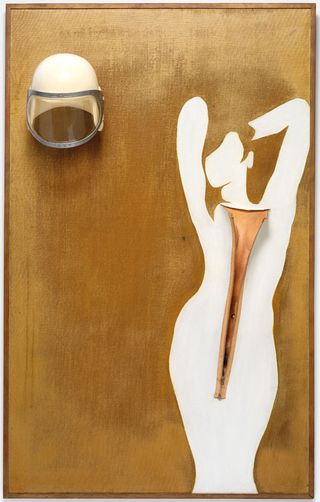
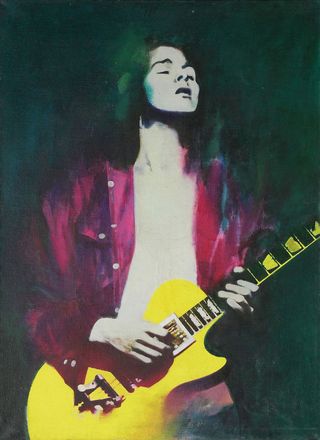
Guitarist, by Cornel Brudascu, 1970. Photography: Szabolcs Feleky, copyright the artist
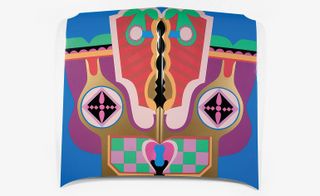
Birth Hood, by Judy Chicago, 1965–2011. Photography: Donald Woodman, copyright the artist/DACS 2015
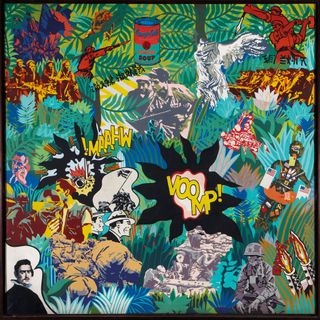
El realism socialista y el Pop Art en el campo de batalla , by Equipo Crónica, 1969. Photography copyright Equipo Crónica (Manolo Valdés and Rafael Solbes), courtesy Marlborough Gallery, New York
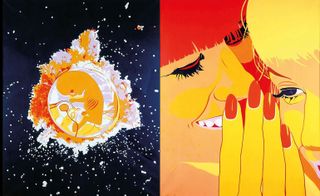
Pilules capsules conciliabules, by Bernard Rancillac, 1966. Photography: Nathalie Rancillac, copyright the artist/DACS 2015
INFORMATION
'The World Goes Pop' is on view until 24 January 2016
ADDRESS
Tate Modern
Bankside
London SE1 9TG
Wallpaper* Newsletter
Receive our daily digest of inspiration, escapism and design stories from around the world direct to your inbox
-
 DAB 1α electric motorbike is the first product from French manufacturer DAB Motors
DAB 1α electric motorbike is the first product from French manufacturer DAB MotorsThe DAB 1α is an all-electric motorbike born out of industrial design, gaming culture and aviation technology, and now available to order
By Jonathan Bell Published
-
 The 2024 Ivor Novello nominations for songwriting have been revealed
The 2024 Ivor Novello nominations for songwriting have been revealed77 British and Irish songwriters and composers make up this year's nominees, announced tonight at London's Groucho Club
By Charlotte Gunn Published
-
 Why Bollinger’s La Grande Année 2015 champagne is worth celebrating
Why Bollinger’s La Grande Année 2015 champagne is worth celebratingChampagne Bollinger unveils La Grande Année 2015 and La Grande Année Rosé 2015, two outstanding cuvées from an exceptional year in wine-making
By Melina Keays Published
-
 Step into Yoko Ono’s immersive world at Tate Modern
Step into Yoko Ono’s immersive world at Tate Modern‘Yoko Ono: Music of the Mind’ spans the artist and activist's work from the 1950s to the present day
By Hannah Silver Published
-
 Frieze London 2023: what to see and do
Frieze London 2023: what to see and doEverything you want to see at Frieze London 2023 and around the city in our frequently updated guide
By Hannah Silver Last updated
-
 Tate Modern announces The Infinities Commission for rising contemporary artists
Tate Modern announces The Infinities Commission for rising contemporary artistsTate Modern’s new Infinities Commission will support experimental work from around the world
By Tianna Williams Published
-
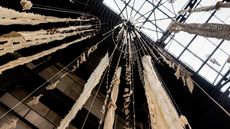 Cecilia Vicuña’s ‘Brain Forest Quipu’ wins Best Art Installation in the 2023 Wallpaper* Design Awards
Cecilia Vicuña’s ‘Brain Forest Quipu’ wins Best Art Installation in the 2023 Wallpaper* Design AwardsBrain Forest Quipu, Cecilia Vicuña's Hyundai Commission at Tate Modern, has been crowned 'Best Art Installation' in the 2023 Wallpaper* Design Awards
By Harriet Lloyd-Smith Published
-
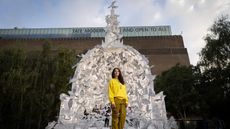 Come Home Again: Es Devlin’s spiritual ode to biodiversity at Tate Modern
Come Home Again: Es Devlin’s spiritual ode to biodiversity at Tate ModernCommissioned by Cartier, Es Devlin’s monumental public installation Come Home Again is a space for education, contemplation and conservation action. We visit the artist’s London studio to hear more
By TF Chan Last updated
-
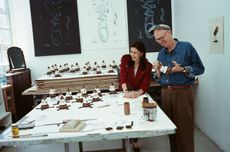 The dynamic duet of Claes Oldenburg and Coosje van Bruggen
The dynamic duet of Claes Oldenburg and Coosje van BruggenRemembering Claes Oldenburg, who died aged 93 on 18 July 2022, we revisit our 2021 article celebrating his partnership with Coosje van Bruggen, as the duo’s final work together, Dropped Bouquet, was realised and exhibited at Pace New York’s ‘Claes & Coosje: A Duet’
By Harriet Lloyd-Smith Last updated
-
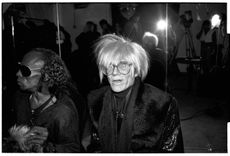 The Andy Warhol Diaries on Netflix reveals his enduring impact on contemporary art
The Andy Warhol Diaries on Netflix reveals his enduring impact on contemporary artWe review the new documentary, and showcase Warhol’s impact on modern culture through three artists: Deborah Kass, Jeff Koons and Glenn Ligon
By Harriet Lloyd-Smith Published
-
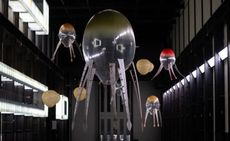 Anicka Yi fills Tate Modern’s Turbine Hall with science, scent and intrigue
Anicka Yi fills Tate Modern’s Turbine Hall with science, scent and intrigueAnicka Yi has let loose a family of floating AI jellyfish in Tate Modern’s Turbine Hall. We spoke to the artist as she prepared for her scent and science-infused Hyundai Commission
By Nick Compton Last updated